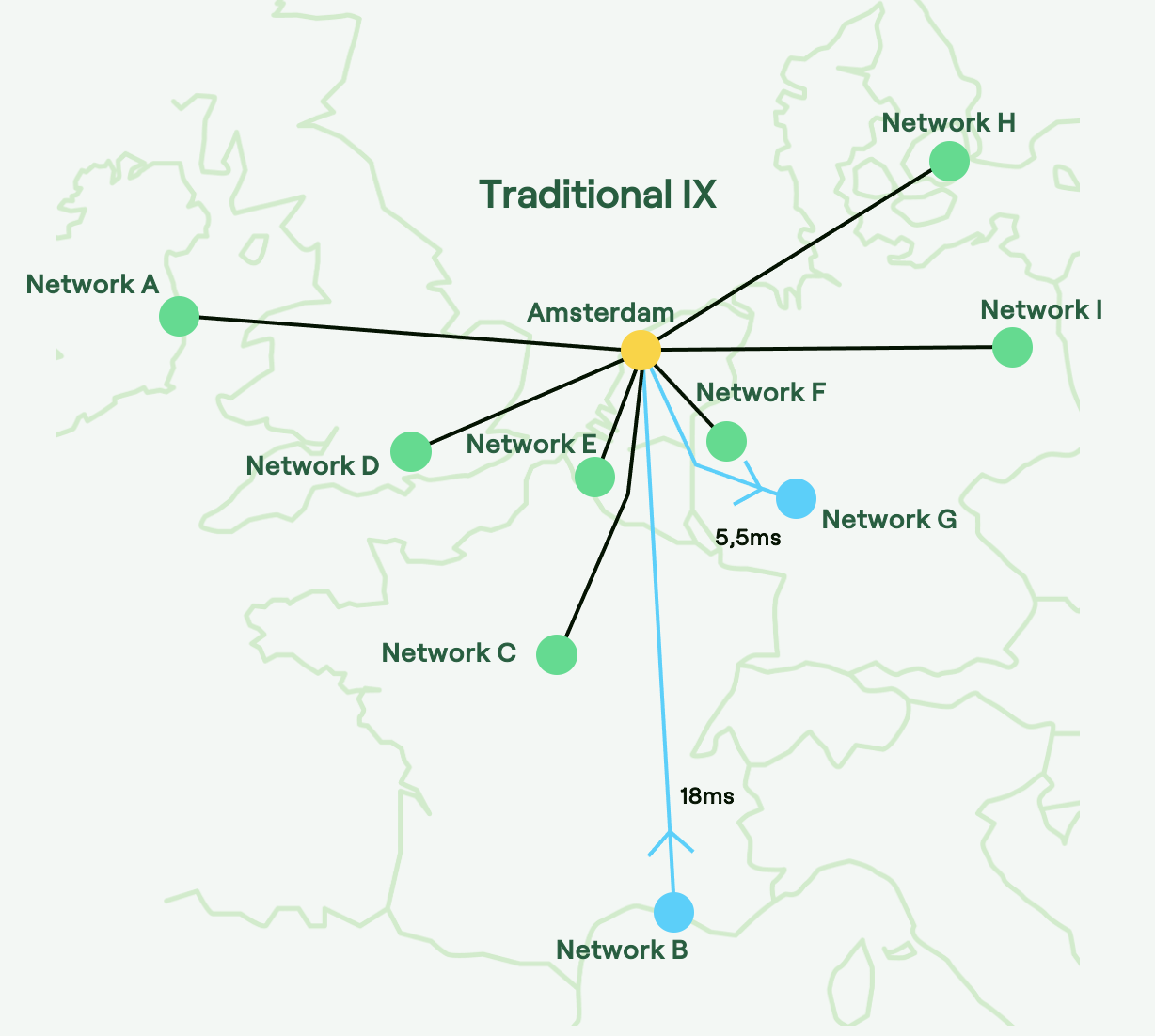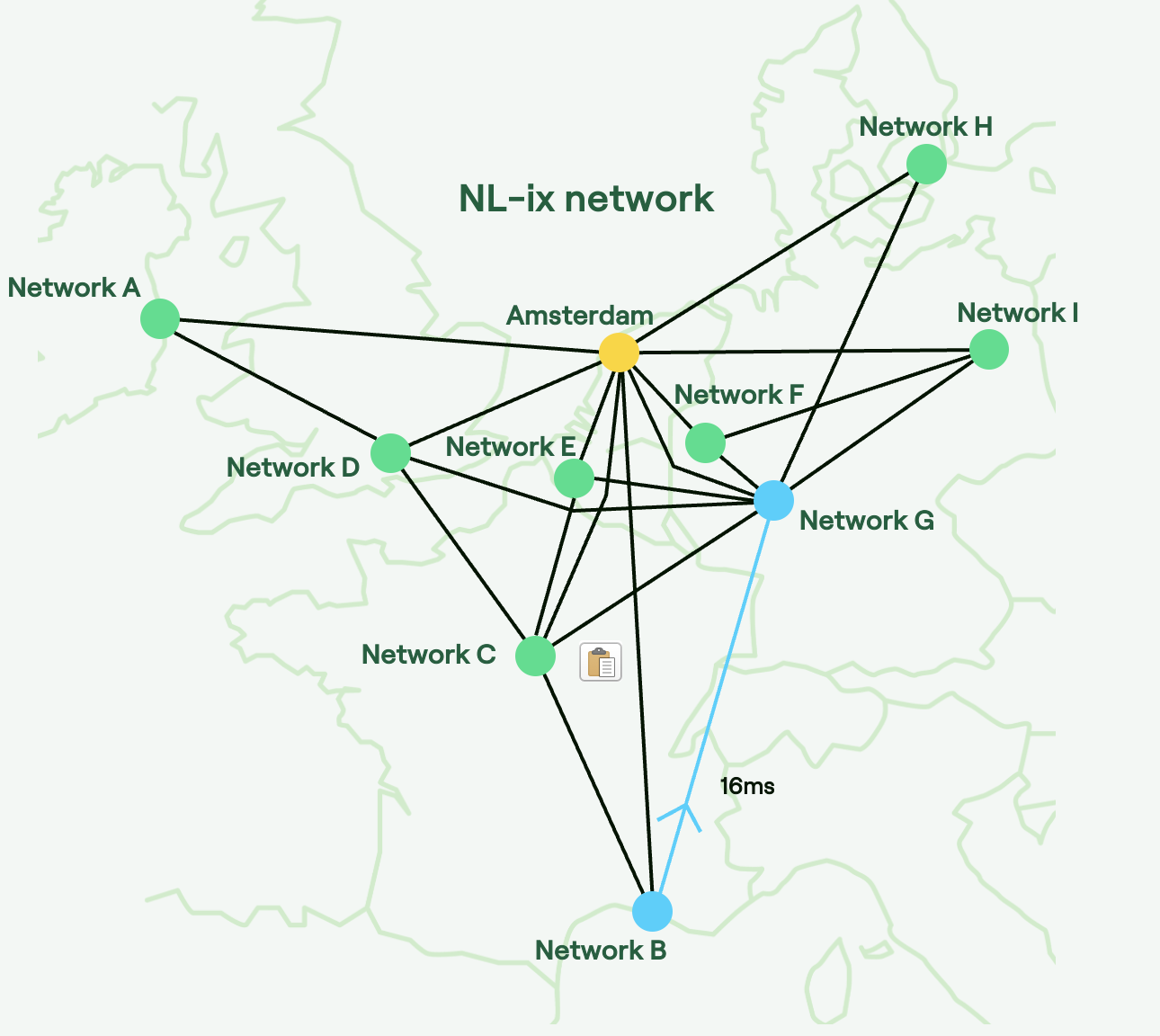
Benefit of distributed network
What is the distributed NL-ix exchange?
While the original intent of Internet Exchanges was to maintain traffic local for direct exchange, the modern landscape has evolved. Networks now span globally, connecting to major Internet Exchanges worldwide, challenging the concept of local traffic. By extending the Peering network internationally, NL-ix offers networks the opportunity to connect as locally as possible, ensuring transparency in their connection location.
The Benefit
With NL-ix, all locations are connected to the other directly, resulting in lower latency.
The NL-ix approach avoids centralising traffic, resulting in lower latency as network traffic can flow directly between locations. Additionally, decentralisation improves stability and reliability by reducing single points of failure.


The NL-ix approach is simple and effortless. The distributed VLAN allows customers to connect to all our 550+ peers by connecting in one datacenter only.
This reduces CAPEX and OPEX for opening POPs and provides instant access to Major European providers like Akamai, Fastly, Facebook, TikTok, Lumen, Amazon, Riot games, Gameforge, Valve, Limelight, Edgecast, Twitch, Netflix, Cloud flare, Net Solutions, and many more.
See Connected Networks for an overview of all connected networks.
NL-ix Infrastructure
The NL-ix infrastructure consists of a network of low latency routes that spans Western Europe. This infrastructure centers around core locations in each country that are interconnected internationally.
Around these core sites, NL-ix has Points of Presence (POP) in other datacenters. These POPs are all connected to at least one core location, providing both local presence and optimal network performance.
Low-latency backbone
The NL-ix network's backbone is based on glass fiber routes, commonly known as "trader routes", which are specifically engineered to comply to the stringent requirements of financial trading and other latency-sensitive applications.
Monitoring and live latencies
Furthermore, NL-ix proactively monitors the performance and health of our network infrastructure. Through advanced monitoring tools and systems, we continuously monitor key parameters such as latency, packet loss, and overall network performance.
To see live latencies: Click on a location on the network map at the homepage
-
For networks from Western Europe
Discover the benefits of the distributed NL-ix network
Read more -
For networks from Eastern Europe
Discover the NL-ix International Peering Platform: Pick-up the content your users want at Frankfurt
Read more -
For networks from Africa, Asia and the Middle East
Gateway to Europe: Pick-up the content your users want at Marseille
Read more